![]() I often complain about trends while in the midst of them, mostly because I prefer k-pop to draw from a wide variety of influences rather than use a copy-and-paste template. But looking back at the industry’s history, trends are an interesting way to summarize a year or era.
I often complain about trends while in the midst of them, mostly because I prefer k-pop to draw from a wide variety of influences rather than use a copy-and-paste template. But looking back at the industry’s history, trends are an interesting way to summarize a year or era.
I thought it would be fun to challenge myself to sum up the past few years using only two overarching musical descriptors. More often than not, these two words will go hand in hand.
Why start with 2011, you ask? What we would consider “modern” k-pop has been active and influential much farther back than that, but in my opinion 2011 represents the year that the industry truly began to proliferate to a point where we were getting multiple big-name comebacks each and every week. This level of quantity really brings particular trends to light.
As always with this site, I tried to keep the focus on musical elements rather than group configurations or visual style, though the industry has certainly evolved in those ways as well.
2011: Hook Songs and Concepts
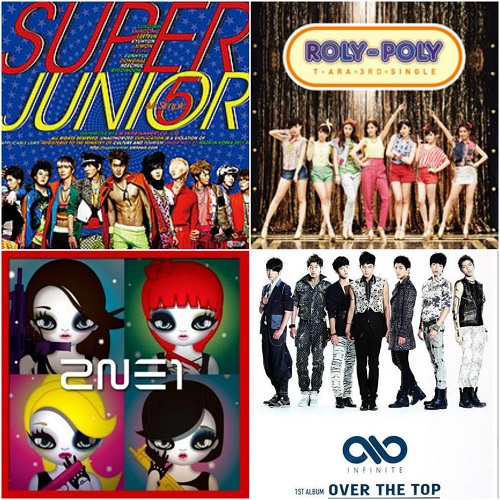 In 2011, k-pop was all about the chorus, often using repetitive hooks that were infectious to the point of becoming maddening. As the industry was steadily gaining international attention, its concepts began to grow more dramatic and over-the-top. Agencies invested big money in super-stylized music videos and bombastic instrumentals, resulting in plenty of symphonic flourishes and theatrical arrangements.
In 2011, k-pop was all about the chorus, often using repetitive hooks that were infectious to the point of becoming maddening. As the industry was steadily gaining international attention, its concepts began to grow more dramatic and over-the-top. Agencies invested big money in super-stylized music videos and bombastic instrumentals, resulting in plenty of symphonic flourishes and theatrical arrangements.
2012: Electronic and Club
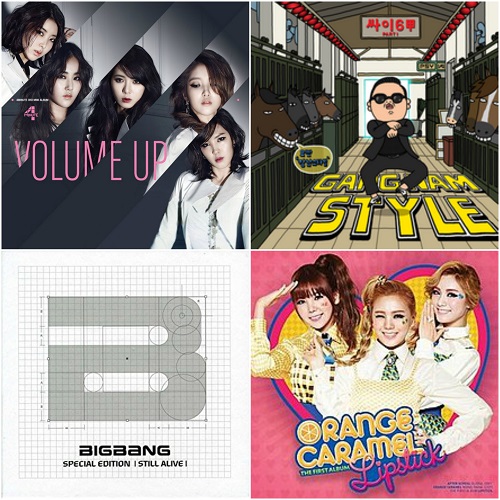 Taking cue from global trends, 2012 was all about targeting the dance floor. This meant immense, sledgehammer beats, sky-high tempos and a continual electro thump underlining k-pop’s more idiosyncratic roots. Even hip-hop and indie acts weren’t totally immune, adopting a more streamlined dance pop approach. It’s my personal favorite k-pop year.
Taking cue from global trends, 2012 was all about targeting the dance floor. This meant immense, sledgehammer beats, sky-high tempos and a continual electro thump underlining k-pop’s more idiosyncratic roots. Even hip-hop and indie acts weren’t totally immune, adopting a more streamlined dance pop approach. It’s my personal favorite k-pop year.
2013: Experimental and Dubstep
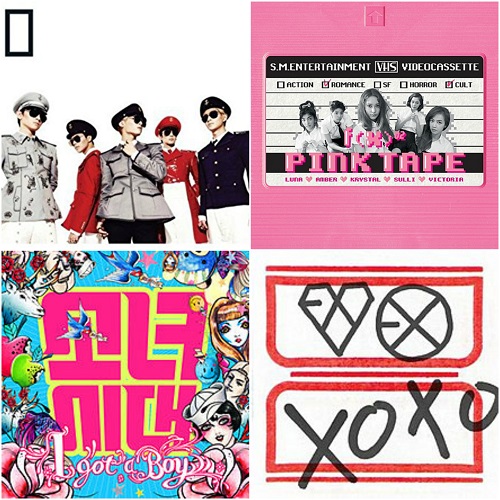 After k-pop’s big coming out party with 2012’s Gangnam Style, 2013 doubled down on the industry’s more eclectic leaning. Dubstep breakdowns were everywhere, but they were only the tip of the experimental iceberg. From atypical song structure to bizarre genre mash-ups, 2013 was one of k-pop’s most exciting, anything-goes years.
After k-pop’s big coming out party with 2012’s Gangnam Style, 2013 doubled down on the industry’s more eclectic leaning. Dubstep breakdowns were everywhere, but they were only the tip of the experimental iceberg. From atypical song structure to bizarre genre mash-ups, 2013 was one of k-pop’s most exciting, anything-goes years.
2014: Hip-Hop and Refinement
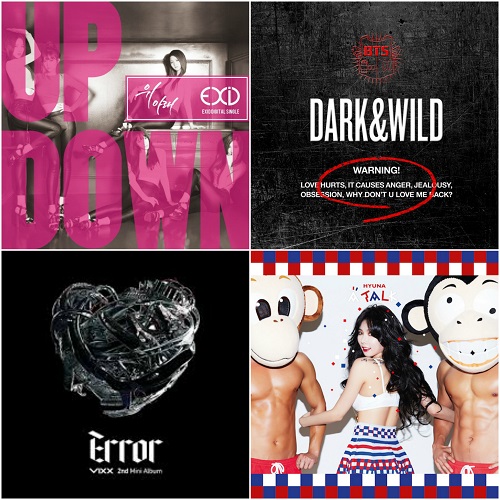 K-pop has always had a strong hip-hop base, but 2014 really brought that to the forefront. It was a year defined by badass girl groups and blustering, swag-driven boy groups. It also introduced trap music to k-pop (for better and worse), all the while refining the idol group sound into something a bit more serious-minded. There were still plenty of candy-coated hooks to be found, but many acts trended towards a darker, more mature sound.
K-pop has always had a strong hip-hop base, but 2014 really brought that to the forefront. It was a year defined by badass girl groups and blustering, swag-driven boy groups. It also introduced trap music to k-pop (for better and worse), all the while refining the idol group sound into something a bit more serious-minded. There were still plenty of candy-coated hooks to be found, but many acts trended towards a darker, more mature sound.
2015: Retro and Brass
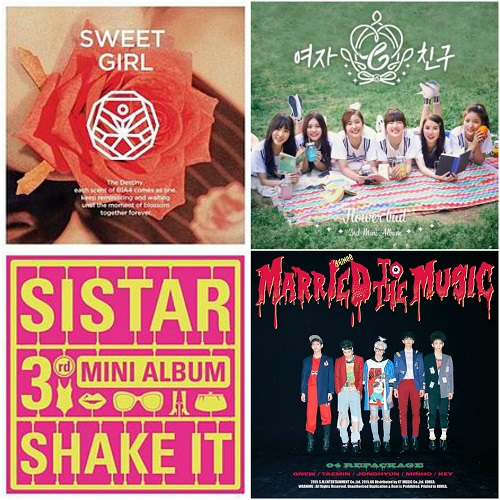 2015 is a hard year to categorize, because like 2018 (so far) it feels very transitional. However, many of the year’s big songs opted for a retro approach, whether that drew from influences as far back as 70’s funk, 80’s dance and 90’s deep house, or as recent as 2007/08 k-pop (I’m looking at you, Gfriend). The hip-hop influence remained very high, but added a heavy dose of brass riffs to the instrumental framework.
2015 is a hard year to categorize, because like 2018 (so far) it feels very transitional. However, many of the year’s big songs opted for a retro approach, whether that drew from influences as far back as 70’s funk, 80’s dance and 90’s deep house, or as recent as 2007/08 k-pop (I’m looking at you, Gfriend). The hip-hop influence remained very high, but added a heavy dose of brass riffs to the instrumental framework.
2016: Bubblegum and Innocent
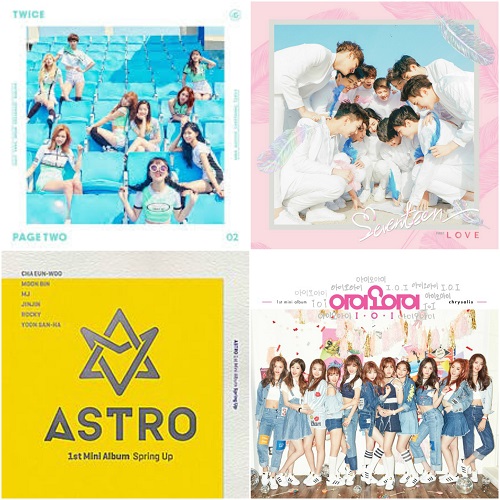 If k-pop had been steering a bit darker over the past few years, 2016 saw a resurgence of bright, innocent concepts. This was especially evident in the girl group landscape, which delivered a near constant schedule of cute comebacks. Though not quite as specific to 2016, the industry also crept closer towards its reliance on American and European trends that would dominate 2017.
If k-pop had been steering a bit darker over the past few years, 2016 saw a resurgence of bright, innocent concepts. This was especially evident in the girl group landscape, which delivered a near constant schedule of cute comebacks. Though not quite as specific to 2016, the industry also crept closer towards its reliance on American and European trends that would dominate 2017.
2017: Tropical House and EDM
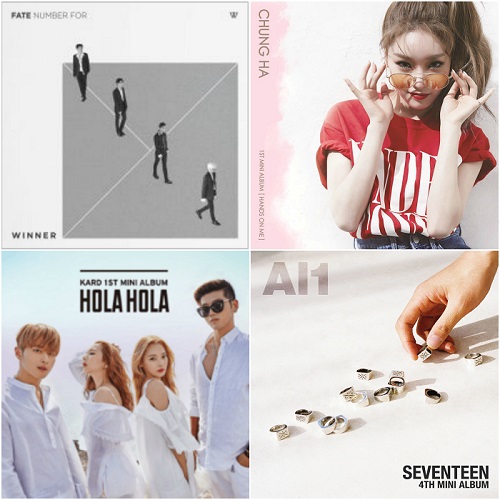 In one of k-pop’s most trend-beholden years, you couldn’t go anywhere without hearing the familiar chirpy synths of tropical house or clattering drops of EDM. The industry was in love with a particular type of song structure in 2017 — one that preferred a huge electronic build over a fleshed out chorus. Trap and future bass rounded out the equation, resulting in a very Westernized sound.
In one of k-pop’s most trend-beholden years, you couldn’t go anywhere without hearing the familiar chirpy synths of tropical house or clattering drops of EDM. The industry was in love with a particular type of song structure in 2017 — one that preferred a huge electronic build over a fleshed out chorus. Trap and future bass rounded out the equation, resulting in a very Westernized sound.
2018: ????
It’s too early to tell what 2018’s overarching trends will be, and so far nothing new seems to be dominating. What’s your prediction?
I really liked 2014 kpop’s darker era, particularly songs like Good Luck, Error and Back. I hope 2018 brings back more of the dark concept!
LikeLike
I think this post is mostly spot on, other than the I think the 2015-16 ubiquitous trap-chorus-drop that utterly dominated boy groups of that time is worth mentioning. You know, a la “Fire” and “Bang Bang Bang” (except most were not nearly as successful as those songs). 2018 is the year that we transition out of the trop house wasteland, which is great, so I see a year of experimentation happening until the next trend latches on. So far in 2018, with the rise of NCT, I foresee the return of Weird SM™️ — extended song structures, playing with R&B and hiphop stylings in a dance song format, and nontraditional choruses (somewhere in between a traditional melodic chorus and the 2016-17 bass drop chorus). For girl groups, I see split happening: a resurgence of the “girl crush” concept as international fans gain more influence, as well as a transition from the “pure aegyo” concept to the “synth-driven lighterwaving midtempo” concept. My true hope is for a Sweetune group to hit it big, and for distorted guitar to become the new thing in kpop.
P.S. 2012 is also my favorite year!
LikeLike
From your lips to k-pop producer’s ears! I would love nothing more than distorted guitar to become this year’s trend, and I think so far this year there’s been some evidence of that actually becoming a possibility.
As for Sweetune, you already know my feelings about that! I do think that if Golden Child stick with them for some subsequent comebacks, there’s a strong possibility that they could score a sizable hit (or at least steadily rising success) with a Sweetune song.
And I agree about the trap/drop trend. I think I just couldn’t quite determine which year to attach it to because, unfortunately, it’s been a pretty steady trend since late 2014.
LikeLike
Pingback: Song Review: Stray Kids – District 9 | The Bias List // K-Pop Reviews & Discussion
Pingback: Roundtable: Beyond the (Chart-Topping) Scene – seoulbeats
Pingback: Song Review: Kim Donghan – Sunset | The Bias List // K-Pop Reviews & Discussion
Pingback: Song Review: M.O.N.T – Will You Be My Girlfriend? | The Bias List // K-Pop Reviews & Discussion
Pingback: Song Review: 3YE – DMT (Do Ma Thing) | The Bias List // K-Pop Reviews & Discussion
I think you should update this post. I’m curious about which trends defined 2018, 2019 and so far, 2020.
LikeLike